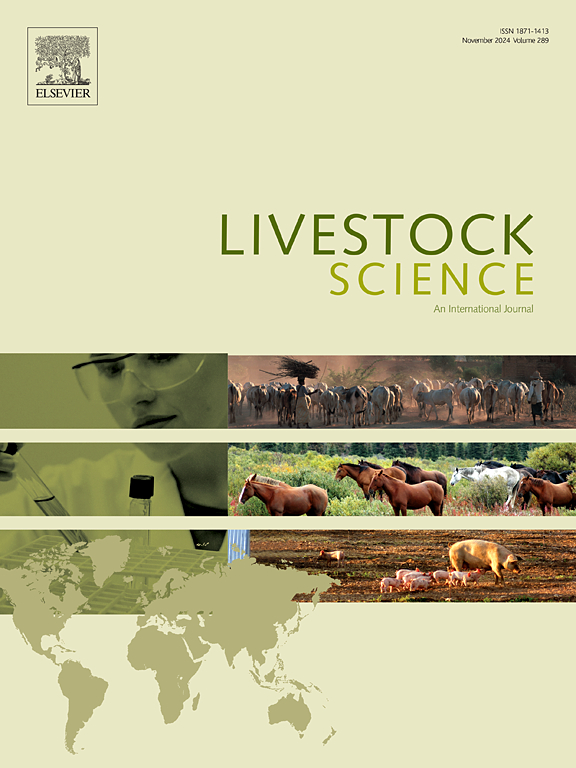Estimating daily fat percentage from single samples in herds with automatic milking system using a regression model
IF 1.8
3区 农林科学
Q2 AGRICULTURE, DAIRY & ANIMAL SCIENCE
引用次数: 0
Abstract
Constant access to the automatic milking system (AMS) leads to varying milking frequency of cows and subsequently varying milking interval lengths (MI) and milk yield (MY) of single milkings. This influences milk production and can result in variable milk composition in individual milkings during the day.
In this study, different effects of animal and milking frequency associated characteristics on the milk components fat and protein from herds milked with AMS were explored and analyzed with respect to their influence on daily content. From this, a new regression model was developed to enable the estimation of daily fat percentage from single sampled milkings on test day. Collectively, 909,922 test day records from 176,926 cows in Germany and Austria milked two to three times within 24 h with AMS were assembled. As the complex process of fat production in the udder is notably affected by MI and MY, common regression models address this issue by mainly relying on fat%, MY and MI of two preceding milkings. The new regression model increases the number of included preceding milkings up to four covering a timespan of >24 h. Moreover, the model is complemented by lactation stage, parity, and daytime of the sampled milking. Its performance was compared to those of two regression models from literature. With a root mean squared error of 0.275, a mean absolute error of 0.195 and R2 = 0.816 the new model outperformed these reference models. For 62.6 % of test day records, the developed model estimated a more precise daily fat content than the measured fat content from a single milking.
Therefore, this model is an adequate solution for estimating the daily fat content for AMS herds, which are not able to take more than one sample on test day.
求助全文
约1分钟内获得全文
求助全文
来源期刊

Livestock Science
农林科学-奶制品与动物科学
CiteScore
4.30
自引率
5.60%
发文量
237
审稿时长
3 months
期刊介绍:
Livestock Science promotes the sound development of the livestock sector by publishing original, peer-reviewed research and review articles covering all aspects of this broad field. The journal welcomes submissions on the avant-garde areas of animal genetics, breeding, growth, reproduction, nutrition, physiology, and behaviour in addition to genetic resources, welfare, ethics, health, management and production systems. The high-quality content of this journal reflects the truly international nature of this broad area of research.
 求助内容:
求助内容: 应助结果提醒方式:
应助结果提醒方式:


